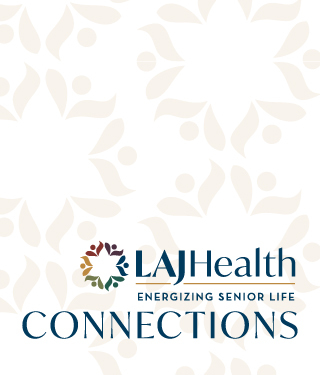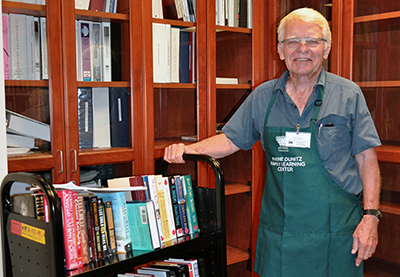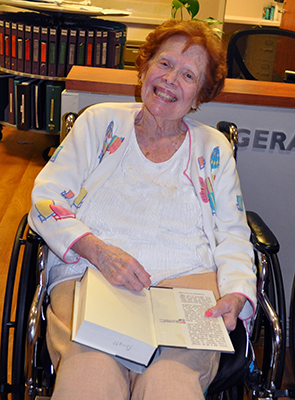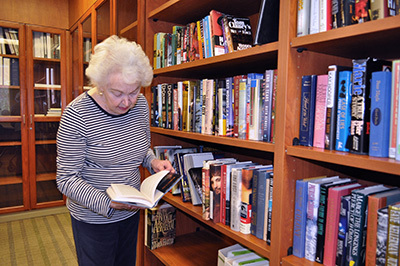Connecting Through Books


Connecting Through Books
Volunteer Phil Moser is pulling best-selling books off the shelves in the Maxine Dunitz Family Learning Center, located on the ground floor of the Joyce Eisenberg-Keefer Medical Center (JEKMC), and putting them onto a rolling cart. He's only been volunteering at the Home for a month, but already knows large-print books are in demand. He also knows fiction is more popular with the residents than non-fiction. Once his cart is loaded, he begins his rounds, offering books to residents in the common areas, tidying up the smaller libraries on each floor, and visiting with residents in their rooms.

Phil retired from his career in the L.A. County Department of Children and Family Services 15 years ago, then began volunteering in downtown's Central Library. "When you retire, you want to volunteer at places you want to be." His wife Aylene Kovary, whose mother lived in the Home for 12 years, has been volunteering here for about 15 years. Aylene reads to residents and operates the Boutique on the Eisenberg Village campus. When she heard the Home needed help with the library, she knew it would be a natural fit for Phil and told him about it.
In addition to housing books for residents, the Maxine Dunitz Family Learning Center serves as the medical library for the staff in JEKMC. Residents also use the center to access computers and Dakim cognitive fitness learning machines.

Phil has begun friendships with many book lovers in JEKMC. On the second floor, he chats with resident Bernice Edelman, who enjoys browsing through the books on the cart and selects several each Monday. When asked about Phil's help, she declares, "I love it!" Bernice also buys her own books and donates them to the Dunitz Center when she's finished for others to enjoy. Her roommate Charlotte requests a Danielle Steel paperback. If Phil can't find it in the collection, he'll pass the request along to the donors of the library, who make book purchases regularly.
Phil stops in to visit Bayla Fineman and her husband, Sam. Bayla reads a book a day. "I start in the morning and finish at night," she says. Sam points to his head and adds with a smile, "It keeps her sharp!" Phil knows to keep an eye out for fiction by Michael Crichton and Lee Child for Bayla. As he pushes his cart down the hall to continue his rounds, he says of his new position, "It's a good gig."
